Meet Jack
I'd like to tell you the story of my relationship with a 14 month-old Border collie. This dog was used to having his own way in life; he was dominant/aggressive and extremely hand-shy when I adopted him. If it weren't for the use of a little clicker toy, I am positive he would not be alive today.
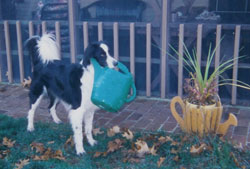
In March of 1999, a friend called me and asked if I'd be interested in adopting her 14-month-old Border collie, Jack, and bringing him to our farm to live. She complained that the dog was nipping and snapping at her children. If we couldn't take him, she was going to bring the dog back to the shelter where she had originally found him as a 3-month-old puppy.
I remember visiting with these people several times and noticing that the dog had been chained outside without any water. I also remember one occasion when my friend's 11-year-old daughter smacked Jack on his head because he wasn't listening to her commands. I tried to correct the girl about hitting the dog, but she ignored me, and my friend did not support my attempts to teach her child proper dog handling. Several times we were invited to dinner, and when we asked where the dog was, my friend replied that he was in his crate down in the basement so he wouldn't bug us. I wasn't surprised to learn that they were having difficulties with Jack.
I went to her house to get reacquainted with Jack, since I hadn't seen him for a long time. He barked and growled at me when I knocked on the door, and I was handed a doggy-bone to give him. Jack accepted the bone, and allowed me into the house. After he settled down a bit, I suggested we go for a walk, and he behaved very well. When we came back, I sat down on their front steps, and the dog sat on the same step with me. I put my arm around him and he sniffed my face, my ear, and my jacket. He was behaving very sweetly. Thinking back, I was extremely lucky not to have my face bitten off!
We went into the house, and I initiated some play with Jack by getting one of his toys and throwing it to him. This is when he showed me that he was an object guarder. He didn't bite me, but he snapped at me when I reached for the toy. This made me nervous, as I'd never seen a dog do this before. I told my friend that I needed to discuss the dog with my husband and we'd let her know our decision soon.
Two weeks later, my friend and her family came for a visit, and they brought Jack with them. When they left that evening, Jack remained at the farm and became a permanent member of my own family. It has been a very challenging time for me and for the dog. We've both received an extreme education—and we've both experienced very good days and very trying days. As more time goes by, I realize that this dog is the best gift anyone could have given me. I am grateful to have been given the opportunity to save his life, and to have reaped so many rewards from him being here.
During the first few months, I busied myself taking Jack to obedience and agility classes. This kept him exercised and he showed some improvements in his general attitude. Unfortunately, this wasn't enough to curtail the nipping. In June, things got very serious; Jack bit someone's hand, causing four puncture wounds. My husband and I discussed euthanasia. I spoke to my trainer and she agreed to start working with Jack privately on a one-to-one basis.
Click/treat
I was instructed to accustom Jack to the clicker by offering him treats several times a day for two days. Each time I gave him a treat, I was to click the clicker right before he received the treat. By the time we started our lessons, Jack associated the click with receiving tasty tidbits of things like hotdog pieces, cheese, liverwurst, and the best leftovers I could find in the fridge.
For the next four months, Jack and I attended private sessions with our trainer/behaviorist two to three times per week. Even though these classes were intense, Jack always looked forward to going, and his bond with his trainer Barbara got stronger with each session. But every time we went to class, I had to put a basket muzzle on the dog to prevent him from biting. Barbara worked with the clicker to try and help Jack accept physical handling. Because the muzzle was like a metal basket, I was able to give him treats through the side of the muzzle. Barbara did all the clicking, and I did all the treating. I learned that the timing of the clicks is critical.
The training begins
There were many things that Jack could not tolerate. He immediately nipped if anyone attempted the following:
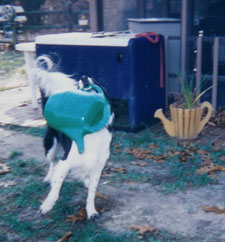
- Grabbing him by the collar
- Leaning over him
- Brushing him anywhere on his body
- Clipping toenails
- Reaching over his head
- Cleaning/medicating his ears
- Taking anything away from him that he had in his possession
- Petting him after he was already down for the night
- Making eye contact
- Looking at him while he ate a rawhide or other recreational bone
- Being at the vet's office
- Getting needles
- Reaching into his crate while he was inside
- Touching his genital area
In addition to the clicker we used another tool—an "Assess-a-Hand." The Assess-a-Hand is a plastic form which looks just like a human arm/hand and is dressed with a sleeve. It has a handle attached to it so the trainer can hold onto it while her own hand remains at a safe distance, in case the dog were to bite.
During the first few lessons, Barbara worked with the Assess-a-Hand to desensitize Jack to being touched all over his body. She concentrated much of her handling around the collar area. If Jack did not respond aggressively to the hand being on his neck, she immediately clicked him and I fed him a tiny treat through the side of his muzzle. It didn't take Jack long to realize he was working for clicks. Very slowly, Barbara began touching him more aggressively around his collar, clicking him anytime he showed no objection to what she was doing. Once the dog was giving us consistent behavior, Barbara upped the ante. She used the fingers on the hand and gently tugged on the collar. Now, the dog did respond with a low growl. He did not get clicked for growling, but seemed to wait for it. Barbara went one step back to a gentle tap on his neck. He was fine with that, so he earned his click and treat. This was a good place to stop the lesson. The objective was to end any session we had on a good note—we wanted the dog to know he had succeeded and not failed.
Progress
The next session started out as a review. Barbara began working on areas for which we'd already clicked Jack. Then she would begin with a newer challenge. Our second lesson was devoted solely to the collar issue. Barbara tugged on Jack's collar and immediately stopped. Jack showed no response, so Barbara instantly clicked him, and he came to me for his earned reward. She tugged at his collar several times that day and we were both very happy that the dog accepted this handling and only wanted to receive a click. The dog was actually enjoying himself. You could almost hear him thinking, "I'm working very hard here, ladies. I know I'm not supposed to growl now. I'm gonna get a goodie if I don't growl, so I won't growl."
I watched as Barbara put the hand tool in the closet. She came and sat down beside me and called Jack to her. Of course, she clicked him for that too! She put Jack in a sit/stay with his head facing in the opposite direction. She looked at me, and my heart started to pound. Barbara reached under Jack's collar with her bare hand and tugged on it. Jack just sat there, but his eyes were trying to look back toward her. She did not click him, because he'd done this successfully many times before. She then gently moved the collar around the dog's neck. No response! A quick click and treat. We praised him verbally, clapped our hands, and ended the lesson for that day.
After about five sessions, both Barbara and I were able to reach under Jack's collar, tug at it, and twist it around his neck. This is pretty much how it went with the rest of his known triggers. Again, using the Assess-a-Hand, we'd start out slowly, desensitizing him to being touched with the hand, and then we'd end with touching him with our own hands. Jack was a pro earning his clicks. I found it very interesting that there were some lessons where he showed almost no interest in coming to me for a treat (although I always gave him one). He was so intent on hearing that click that it was enough reward for him to offer up his very best behavior.
Many steps forward—but a few struggles, too
I followed through with this training, using the clicker at home since it was proving very successful. I was relieved that Jack was more willing now to be groomed. In the beginning, I could not use a groomer's comb or the harder bristles of any brush. Because Jack does have allergies, it's necessary to medicate his ears daily. I was able to desensitize him myself to this task just by clicking him and giving him a treat anytime I touched his ears. Finally, my hands were beginning to heal from all the nipping I had received from Jack!
I was feeling much more optimistic about Jack's future. Both my husband and I noticed that the dog's eyes were softening. Border collies do have a tendency to stare, but Jack's way of looking at us was to glare. What we were beginning to see in his eyes looked more like the way puppies look at their owners; we believed we were seeing trust in his face. We also were happy to see that he was beginning to lick us. He had not done this prior to working with Barbara and her clicker.
Things were not always so cut and dried in Jack's training. One day, Barbara put a baby gate between her office and the room in which we worked with Jack. Her phone rang and she went to lift her leg over the baby gate to go into her office, and Jack went crazy! He ran over to her and would have bitten her leg multiple times had he not been wearing the muzzle! This was the first time we'd seen him behave in a non-defensive manner. She tested him several times on this, and each time she lifted her leg to go over the gate, the dog reacted violently. She and I looked at each other and silently asked, "What is this?" Barbara had me go over the gate, but the dog did not show aggression towards me.
Two days later, Jack and I headed for our class, and as soon as I entered the room, I noticed the baby gate was back in position. The gate remained a main focus of our attention for at least two months. Again by desensitizing him, we were able to elicit a conditioned response from the dog. Barbara put her foot over the gate, Jack ran towards her barking, but learned not to touch her, then she'd click him, and he knew to run right over to me for a treat. He never got to the point where he wouldn't react at all. Despite this neurotic behavior, when people lean over my fence to pet the dog, he has never reacted in a violent manner. Possibly Jack thought that when someone lifted a leg over the gate, they were going to kick him? I don't think we'll ever really know why this caused such a problem.
Socialization skills
During this very trying time, Jack was behaving badly towards strangers—snarling and growling at them. I decided to take the bull by the horns, and began walking him in a very public park. I went armed with lots of treats and my ever-present clicker. I cannot tell you how stressful our first walk in the park was! I came home with a splitting headache and Jack slept for several hours. The first park I chose was beautifully landscaped with a huge duck pond in the center, surrounded by a narrow path. I went at the worst possible time of the day—lunch hour on a weekday. Women were wheeling strollers, men were jogging, and children were running around the pond excitedly watching the ducks. What seemed like a ten mile walk was really only one mile. As soon as we began walking, people were walking toward us and behind us. I heard Jack growling under his breath when people were approaching us, so I pulled him off to the side of the path and made him watch people walk by in front of us. He seemed a little calmer doing this, so as long as he wasn't growling or showing any reaction, I clicked my clicker and gave him slices of homemade pot roast. We proceeded further around the pond area, and I continued to pull Jack off to the side, click, and treat him. About halfway around, I sat down on a vacant bench and let the dog just have a look at all of these people. I put him in a down/stay and continued clicking and treating him each time an individual walked by. I did see some progress, but I decided to leave at this point.
The next week, I discovered another park. But this park has an extremely wide path to walk, and is also surrounded by a huge duck pond. Jack's reactions during this second walk were fascinating. We started out and initially he was a little tense. I heard him doing some huffing, and I just told him, "Jack, you be good now," as we continued our walk. Little by little he stopped being so tense, and I was clicking and treating him for everyone that passed by, because he wasn't reacting to any of them. We were able to stay at this park for well over an hour. Right before I was ready to leave, I looked down at my dog when somebody approached us. Jack was drooling! I think Dr. Pavlov would have found this very interesting; I know I certainly did!
A different—and friendly—dog
When I look back almost two years ago, I am astounded at the difference in my dog. I adopted a dominant dog who figured he could control humans by biting them. He could keep strangers away by showing his teeth and growling, and he was extremely tense almost all of the time. He even had nightmares on a regular basis. Jack has become a very loving dog who shows affection readily. He has become more comfortable around humans, including the man at the gas station who must come to the window to get paid. Just last week, Jack allowed my friend to sit in the passenger seat of the car while we went on an errand. He was very friendly towards this person and allowed him to pet him without showing any discomfort whatsoever. I considered this a huge milestone.
Whenever I'm in doubt as to how Jack will react to a situation, I always bring my clicker. It is like having an insurance policy right in your pocket. It tells the dog you want him to behave appropriately, so he responds by trying to please you. We are currently in the process of trying to socialize Jack with other dogs. He is not aggressive with them, but does not yet know the proper way of saying hello. He is in their face immediately and wants to act a bit like a bully, so we have a lot of work to do there.
Jack retained most of what he learned from clicker training. However, he does still have an issue with his collar. I seem to be the only person he will allow to hold his collar, but he still doesn't like it, and will act a bit antsy if I have to hold onto it for any length of time. So, unfortunately, this is one area he was not able to generalize what he learned.
Although he's doing beautifully, we still have some work to do. Since his sessions with Barbara almost a year and a half ago, he's had two incidents of aggression, both occurring last summer. One incident took place with his sheepherding trainer who tried to grab his collar and got nipped on the hand. The other occurred when my neighbor tried to calm Jack by poking his hand through our fence after a strange dog came up our driveway—the neighbor also had his finger nipped. Rome wasn't built in a day. We will keep keeping on.

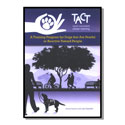
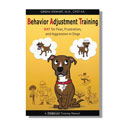
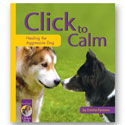
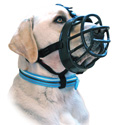
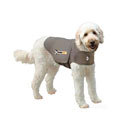

Sticking With It
I too adopted an agressive dog; Eddie belonged to some neighbors and their extended family.He had been kept on a 3 ft' chain standing in his own waste for the better part of 9 yrs.I asked if I could start feeding him ( since he obviously wasn't cared for) and eventually they let me take him.Various people had tormented him through the years and he had inflicted serious bites on some.Over the past 5 yrs. I've gotten to know every specialist in my area dealing with his physical and behavioral problems.Eddie had been shot with buckshot,BB's and .22 fragments are still in his skull:one vet discoveredthat his lower jaw had been broken and remodeled several times. This was only after his first vet recommended putting him down because of his 'unprovoked" aggression but I was convinced that his problems were at least in part due to pain.
I knew about clicker training and was lucky enough to find a veterinary behaviorist/clicker training couple who agreed to take us as clients.Eddie LOVES to work with me now and can do some pretty amazing tricks.He will gleefully give a friend a kiss (learned tht one while we were sitting in traffic) whereas he had been triggered by anyone leaning toward him in the past. He's also reinstalled his growl (that had been beaten out of him) by getting clicked for making any sort of noise,then shaping for what I wanted.I wish you could have seen and heard his joy at being told it was ok to say something.
I could go on and on about how great he is, but as you say, Rome was not built in a day.He still has triggers and seems to store up a lot of little stressors,then erupt.The UGA Veterinary Behaviorist we used diagnosed him as having PTSD and thought it likely that he'd been given drugs (former owners were meth dealers/users) so he may never be "normal".He will be on anti-anxiety meds for life and I do a lot of management stuff (put up a privacy fence,use basket muzzles in potential bite-triggering situations like the vet's) but that's a small price to pay for having him in my life.
Stories like yours were the things that got me through some rough times with Eddie and made me keep going.Thank you from me and Eddie the Wonder Dog!!
Eddie
Hi,
I just read your story about Eddie. I'm so glad that my article was helpful for you and provided encouragement for you to continue with Eddie's rehabilitation. My article was written a long time ago. Jack died in 2006 from a very serious and always fatal liver disease. He turned out to be a very good dog and he learned that people were not bad and could be trusted. He changed my life completely and I've become a professional dog trainer because of him.
Thank you for writing about Eddie!
Regards,
Renee Premaza
Thanks for the inspiration and encouragement
Ms. Premaza,
To begin with my condolences for the loss of Jack and thank you for writing about your experiences with him. Your experiences give me hope that I'll be able to 'nip' Bear's issues before they get too out of hand. Bear's mother is a border collie/aussie mix and his dad is a lab/shepard mix, Bear will be a year old next week (June 6th). My issue is this, he wasn't socialized alot as a puppy and he will nip at new people that come to the house (he has actually ripped clothing twice but hasn't drawn blood) and I am really concerned.
In my search for trainers in my area I cam across this site and started reading about clicker training. My question is this, Is it possible for me to train Bear on my own and if so how do I go about it? I am currently on disability so my income is very limited, but I don't want to see Bear suffer because of that. He sticks pretty close to me, and thus far the nipping is the only thing I am noticing that needs to be immediately taken care of. Any suggestions would be greatly appreciated.
Thanks again for your inspiration and encouragement!
My border collie, in offleash areas barksat people without dogsM
My border collie who is 21 months old is nervous of people who visit out house. We have introduced her slowly to whoever visits and she appears to accept them, then, without any warning will rush up and bark at them. This makes us all jump and is scary for that person. This can happen in offleash areas as well. I can control her and she has never bitten anyone. I had to put her back on leash as a person was training on the running track which offleash share this area. It is a form of nervousness and I can say to her 'get the ball' and she will come back to me. On leash she is docile and if I meet anyone in the street while walking her she will sit and wait until I am ready to continue.
She still, at times, pull back whenever someone puts out their hand to pat her. We got her at 6 months and this is what she did to us. We worked hard at getting her to feel comfortable with us and now we have a loveable animal. BUT, she is not comfortable with many people. f off lead she will bail people up. This never happens when at offleash area where there are people and their dogs. Any suggestions please!
Okay,very good,Thanks..
Okay,very good,Thanks..
Post new comment